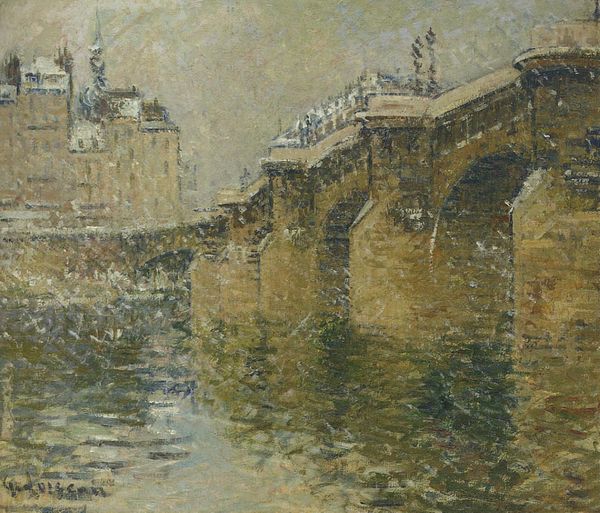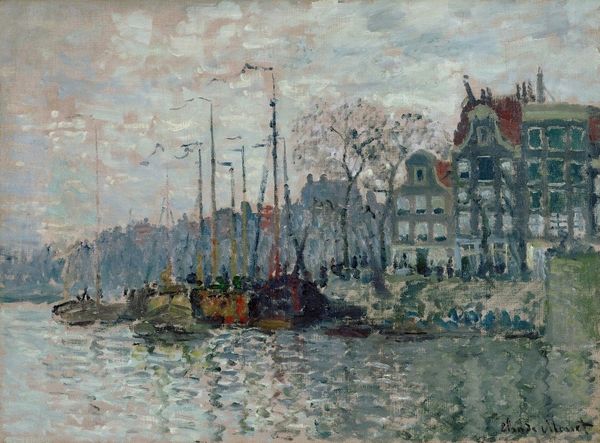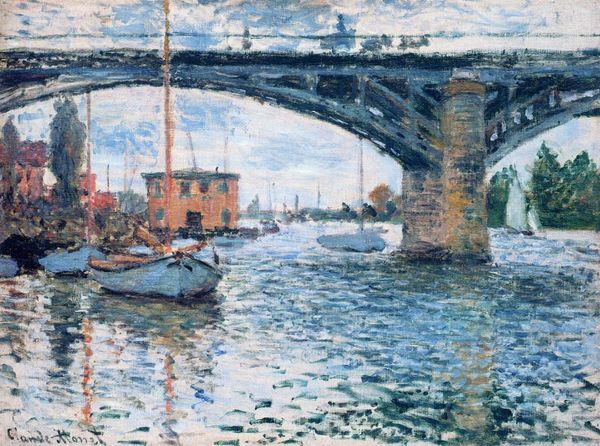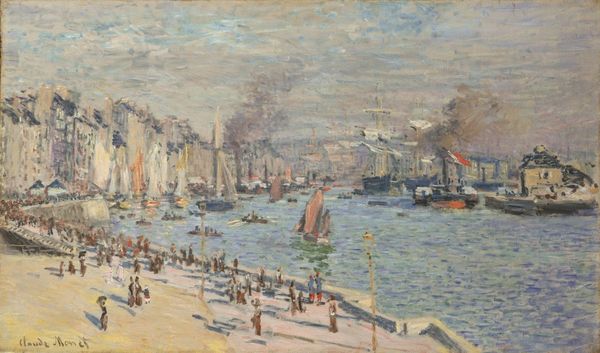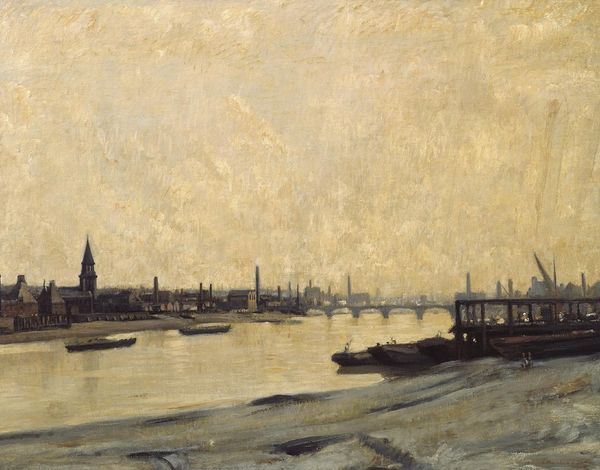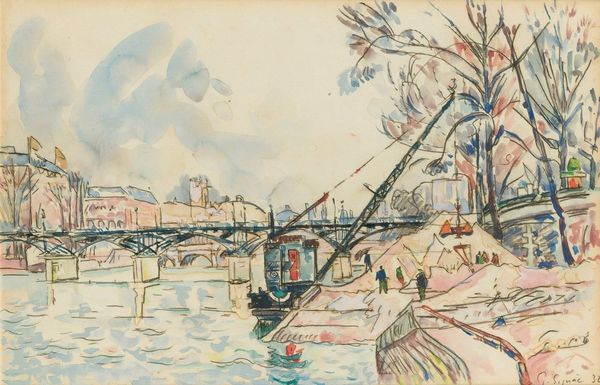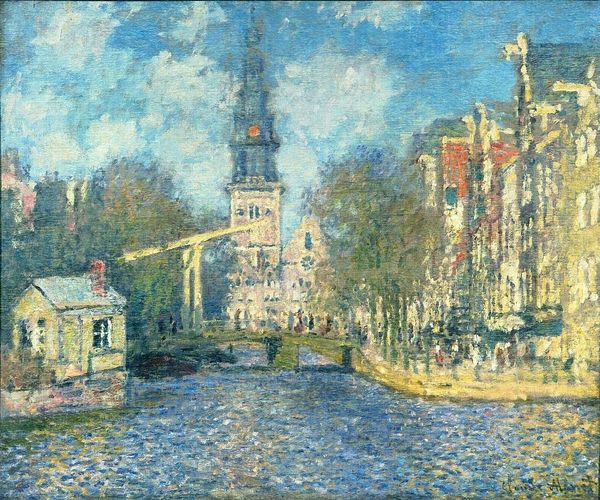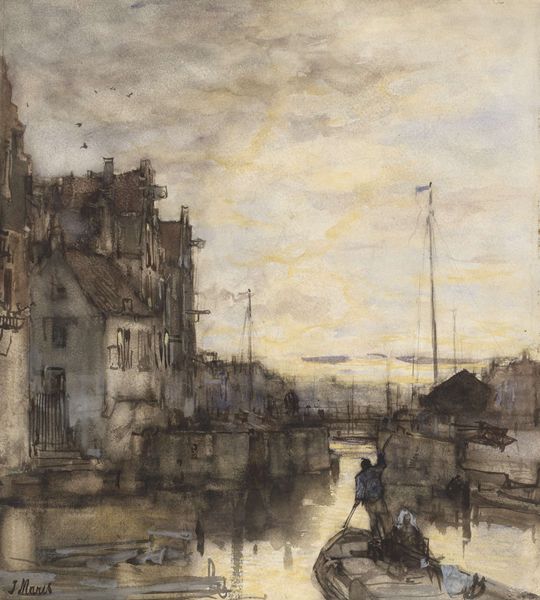
painting, plein-air, oil-paint
#
painting
#
impressionism
#
plein-air
#
oil-paint
#
landscape
#
oil painting
#
cityscape
#
genre-painting
Copyright: Public domain
Claude Monet painted this canvas of a bridge in Amsterdam using oil paints, likely in the early 1870s. As a leading figure of the Impressionist movement, Monet was fascinated by the fleeting effects of light and atmosphere, and here he captured the Dutch city's watery landscape under an overcast sky. Beyond its aesthetic qualities, this painting offers insights into the social and economic transformations of the late 19th century. Amsterdam, as a major port and commercial center, was undergoing rapid industrialization and urbanization. The bridge itself symbolizes connectivity, facilitating the movement of people and goods. Monet’s choice to depict this scene reflects a broader interest among artists in capturing modern life, and considering the institutions that were shaping social behavior at the time. By studying historical documents, maps, and photographs, we can gain a deeper understanding of the bridge's significance within the context of Amsterdam's urban development. Ultimately, the meaning of this artwork is contingent on its social and institutional context.
Comments
No comments
Be the first to comment and join the conversation on the ultimate creative platform.

